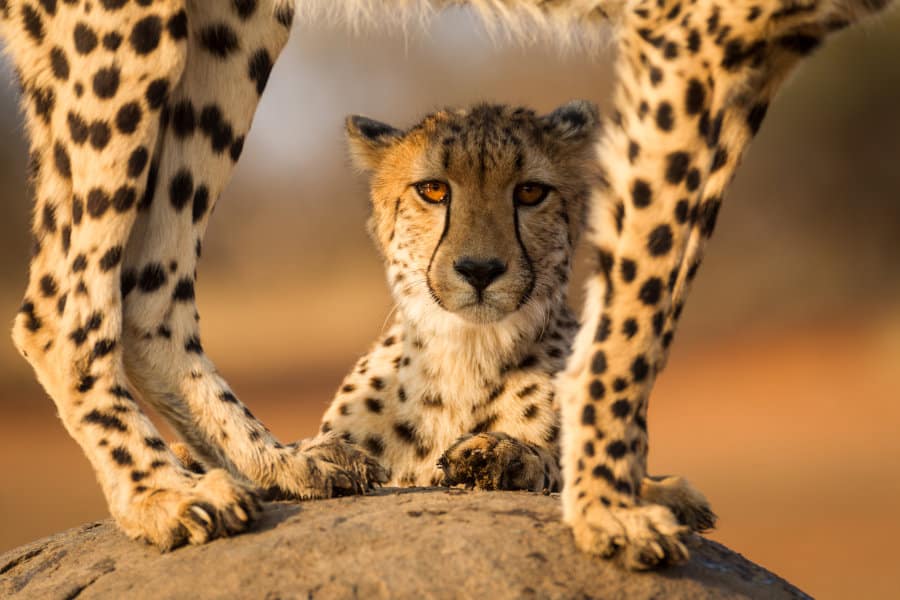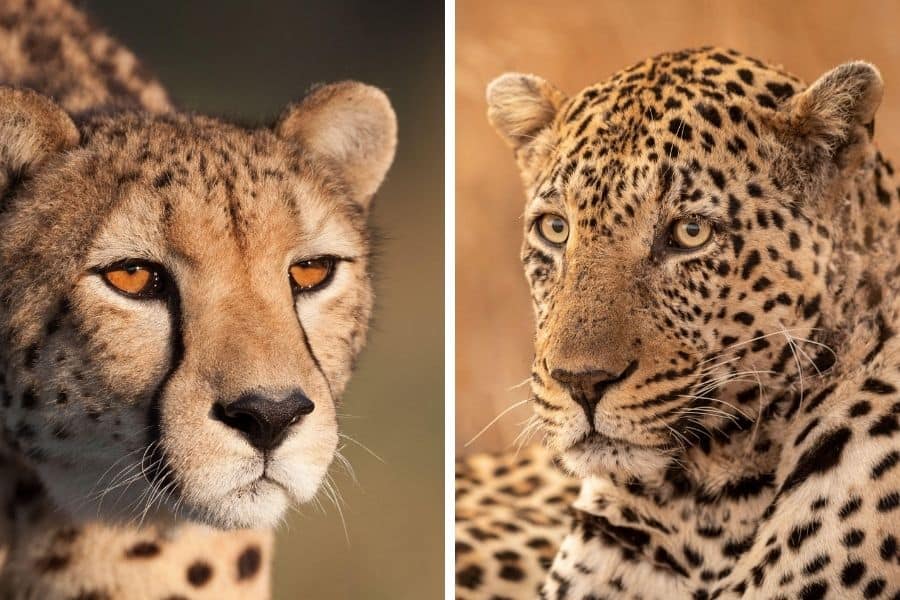Africa is a continent teeming with an incredible array of wildlife, and among its most iconic animals is the cheetah.
Known for their unmatched speed and elegance, cheetahs have captured the hearts of nature enthusiasts and wildlife lovers alike.
In this blog post, we’ll share more about what makes the species special and take you on a virtual safari through the best places to see cheetahs in Africa.
What Makes Cheetahs Special

Cheetahs are purpose built for speed. Their slim, muscular bodies are designed for chasing prey.
The cats differ from Africa’s lions and leopards in that they are diurnal, meaning they are active during the day. When you are on safari, if you are very lucky you might see a cheetah hunt during the daytime, or even make a kill.
Some people have a hard time spotting the differences between cheetah and leopard. You can distinguish a cheetah from a leopard by its size (cheetahs are taller at the shoulder), and their very distinct black ‘tear’ lines that curve from their inner eyes to the outer corners of their mouths.
Cheetahs are the fastest land animals in the world and can run up to 75 mph in short bursts. They weigh between 75-125 pounds but can take down prey weighing much more than they do.
Cheetahs are vocal, with a variety of calls and sounds including purring, chirping, growling and hissing.
Everyone loves to see baby animals, and cheetah cubs are high on the wish lists of people on safari. Cubs are born blind and weigh less than a pound at birth. Their mothers keep them in their dens for up to eight weeks to protect them from predators.
If you look closely, you will see that baby cheetahs have similar black and white markings to those of honey badgers. It is thought that this might be an adaptation to confuse predators while also providing warmth.
Cheetahs are often found in groups, either a ‘coalition’ of male cheetahs that live together or family groups of mothers and their young. The name for a group of cheetahs is a coalition, or when hunting collectively, they are known as a streak.
Females can give birth to between two and six cubs per litter, though their survival rate is around just 10%. The lifespan of a cheetah is between eight and twelve years. Cheetahs are listed as vulnerable on the IUCN Red List due to habitat loss, human/wildlife conflict and poaching.
Cheetah prey on small antelope like impala or gazelles but can also take down larger species such as wildebeest and oryx. They are also known to hunt birds and small rodents.
Cheetah like open plains for good hunting and they have one of the highest success rates among predators in making kills. However, because of their size, they are the most likely to have their kill stolen by other predators such as lions and hyenas.
Best Places to See Cheetahs on Safari
The best places to see cheetahs on safari in Africa include:
Masai Mara National Reserve, Kenya
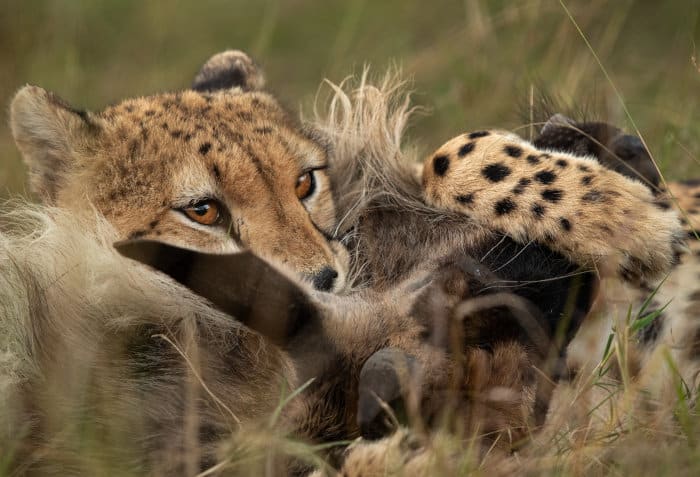
Located in southwestern Kenya, the Masai Mara National Reserve is a part of the larger Serengeti ecosystem that stretches into Tanzania.
The Masai Mara is world renowned for its remarkable wildlife sightings, including the majestic cheetah.
With wide open plains, abundant prey and thriving cheetah populations, the reserve offers a high chance of encountering these magnificent cats.
Witnessing a hunt or observing a mother caring for her cubs in the Masai Mara is an experience that will stay with you forever.
Serengeti National Park, Tanzania
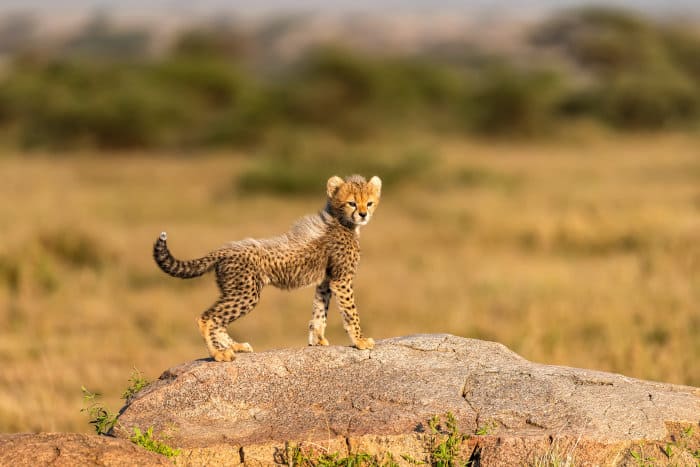
As one of the best-known wildlife destinations on the planet, the Serengeti National Park is an unparalleled place to try to spot the cheetah in action.
Known for its annual wildebeest migration consisting of millions of wildebeest, zebra, antelope and the predators that prey upon them, the Serengeti boasts an impressive cheetah population that takes advantage of the migration’s constant movement of animals.
You can explore the vast, ‘endless’ plains and witness their incredible hunting skills in this remarkable ecosystem.
Etosha National Park, Namibia

Namibia is home to the largest free-roaming cheetah population in the world, with an estimated 1500-3000 of the cats in the country.
Etosha National Park is renowned for its vast salt pans that resemble a moonscape and numerous waterholes that attract diverse wildlife, all seeking relief from their arid surroundings.
The park boasts a healthy population of cheetah and visitors have an excellent chance of observing them in their natural habitat.
Namibia also boasts cheetah sanctuaries including AfriCat, found on the Okonjima Nature Reserve, and the Cheetah Conservation Fund (CCF), housed near the city of Otjiwarongo.
Visitors to these sanctuaries are almost guaranteed to spot one of the fast cats, as they can be tracked by radio telemetry at AfriCat and are specifically located at CCF’s Cheetah Ecolodge.
Kafue National Park, Zambia
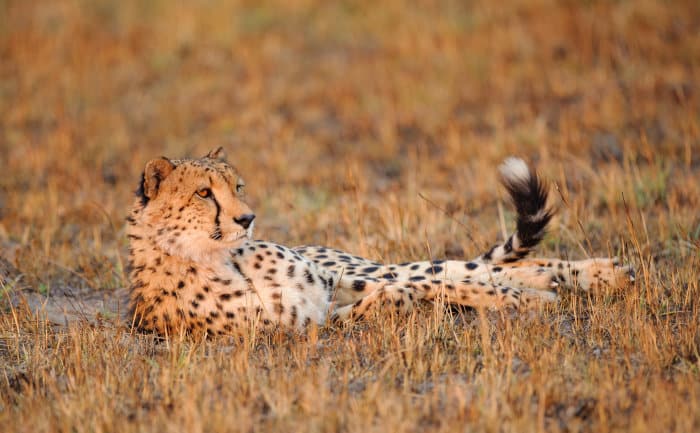
Nestled in the remote western side of Zambia, Kafue National Park offers an authentic African safari experience and holds one of the last viable populations of cheetahs in the country (together with Liuwa Plain).
The park’s diverse ecosystems, ranging from miombo woodlands to savannah grasslands, provide the perfect hunting grounds for this rare and charismatic predator.
Zambia is known as the birthplace of the walking safari. Guests have the chance to embark on a guided walking safari or a thrilling game drive to encounter these magnificent creatures; from a distance while on foot, or up close from a vehicle.
Kruger National Park Area, South Africa
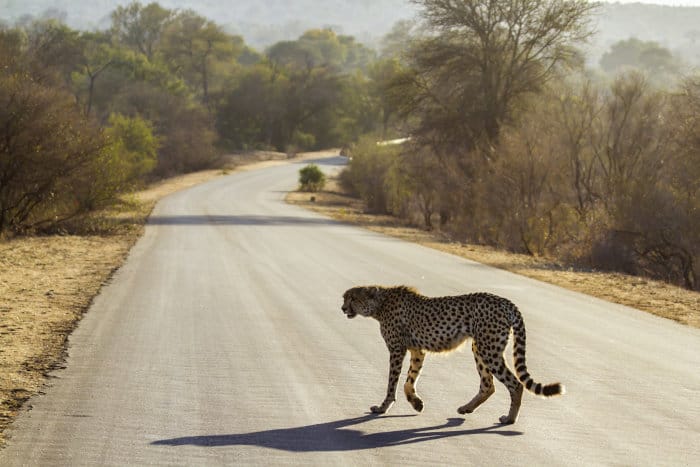
South Africa’s Kruger National Park is well-known as a great destination to see Africa’s Big 5 – elephant, rhino, lion, leopard and Cape buffalo – but it is also a wonderful place to see cheetahs.
More than 400 individuals are thought to live within the park, but it’s best to work with a reputable safari operator to choose a safari camp or lodge that gives you the best chance to spot cheetah.
The area has a wide range of diverse landscapes. Some are more suitable for cheetah sightings than others, especially around Lower Sabie, or the H7 section between Orpen and Satara.
Hwange National Park, Zimbabwe
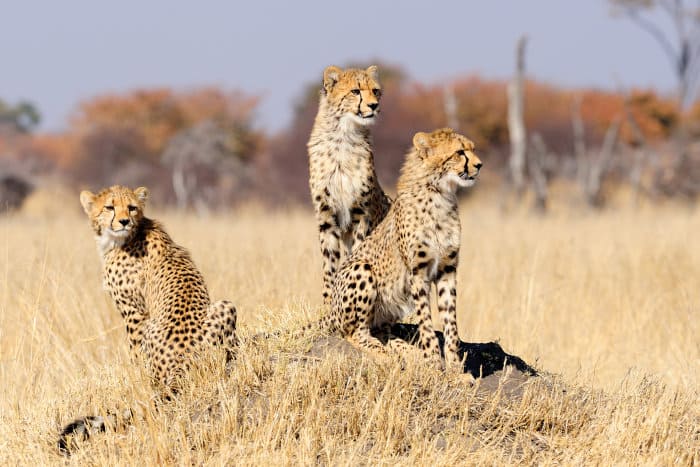
Hwange National Park is Zimbabwe’s largest wildlife area and is home to a huge array of African bird species and wildlife, including the cheetah.
While the park has many diverse landscapes, it is Hwange’s Ngamo Plains on the park’s eastern edge that the cheetah seem to favor.
Guests might find the big cats up in a tree, hunting on the plains or even walking along the park’s 100-year-old railway line, making for fantastic and unusual photo opportunities.
Okavango Delta, Botswana

The Okavango Delta in Botswana is an oasis of biodiversity, attracting a variety of animal species, as well as cheetahs. The Delta’s intricate network of waterways, grassy plains, and lush vegetation provides what is perhaps an unexpected habitat for cheetahs to thrive.
Game drives and guided safaris in Moremi Game Reserve offer a chance to observe these agile predators as they navigate the marshes and showcase their remarkable hunting abilities.
Spot a Cheetah on Your African Safari
Witnessing a cheetah in its natural habitat is an experience that epitomizes the untamed beauty of Africa’s wilderness.
From the vast savannas of Kenya and Tanzania to the even more remote landscapes of Botswana, Namibia and Zambia, Africa offers a diverse array of destinations to explore when seeking the cheetah while on safari.
Planning your safari with an award-winning tour operator like Africa Adventure Consultants will give you the best opportunity to visit areas where you are most likely to spot cheetahs.
